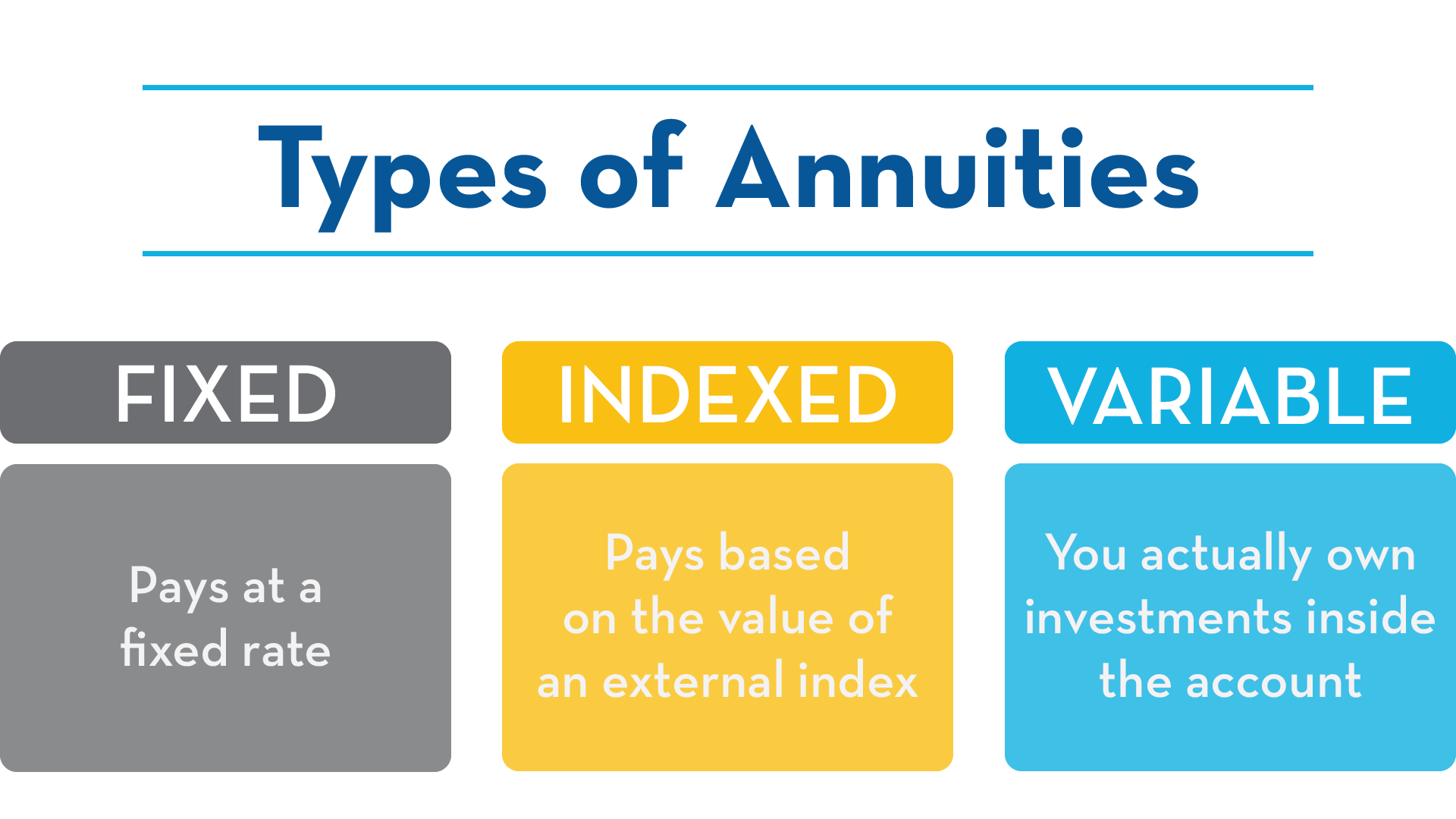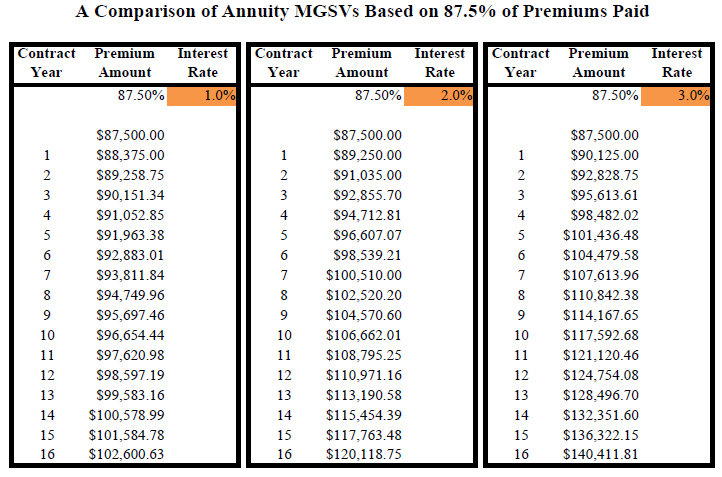All Categories
Featured
Table of Contents
Equally as with a taken care of annuity, the proprietor of a variable annuity pays an insurance provider a round figure or series of payments in exchange for the assurance of a collection of future repayments in return. Yet as discussed above, while a fixed annuity expands at an ensured, consistent price, a variable annuity expands at a variable rate that depends upon the performance of the underlying financial investments, called sub-accounts.

Throughout the buildup phase, assets bought variable annuity sub-accounts expand on a tax-deferred basis and are taxed only when the agreement owner takes out those profits from the account. After the buildup phase comes the income phase. With time, variable annuity assets should in theory raise in worth up until the contract proprietor chooses he or she want to begin withdrawing money from the account.
The most significant issue that variable annuities commonly present is high expense. Variable annuities have a number of layers of costs and costs that can, in accumulation, produce a drag of up to 3-4% of the agreement's value each year.
Decoding How Investment Plans Work Key Insights on What Is A Variable Annuity Vs A Fixed Annuity Breaking Down the Basics of Investment Plans Advantages and Disadvantages of Pros And Cons Of Fixed Annuity And Variable Annuity Why Choosing the Right Financial Strategy Matters for Retirement Planning How to Compare Different Investment Plans: A Complete Overview Key Differences Between Different Financial Strategies Understanding the Key Features of Fixed Vs Variable Annuity Pros And Cons Who Should Consider Variable Annuities Vs Fixed Annuities? Tips for Choosing Choosing Between Fixed Annuity And Variable Annuity FAQs About Planning Your Financial Future Common Mistakes to Avoid When Choosing Variable Annuity Vs Fixed Indexed Annuity Financial Planning Simplified: Understanding Your Options A Beginner’s Guide to Variable Annuity Vs Fixed Annuity A Closer Look at Fixed Vs Variable Annuities
M&E expense charges are calculated as a percentage of the agreement value Annuity issuers hand down recordkeeping and other administrative costs to the agreement owner. This can be in the form of a level annual cost or a percentage of the contract value. Management fees might be included as component of the M&E threat cost or might be examined separately.
These costs can range from 0.1% for passive funds to 1.5% or more for proactively handled funds. Annuity contracts can be customized in a variety of methods to serve the specific requirements of the agreement owner. Some common variable annuity cyclists consist of ensured minimal accumulation advantage (GMAB), assured minimum withdrawal advantage (GMWB), and guaranteed minimal revenue benefit (GMIB).

Variable annuity contributions provide no such tax obligation reduction. Variable annuities have a tendency to be extremely ineffective cars for passing riches to the future generation since they do not enjoy a cost-basis adjustment when the original agreement owner dies. When the proprietor of a taxable investment account dies, the price bases of the financial investments kept in the account are changed to show the market costs of those financial investments at the time of the owner's fatality.
Understanding Fixed Vs Variable Annuities A Closer Look at How Retirement Planning Works Defining the Right Financial Strategy Features of What Is A Variable Annuity Vs A Fixed Annuity Why Annuities Variable Vs Fixed Matters for Retirement Planning Fixed Annuity Vs Variable Annuity: How It Works Key Differences Between Fixed Annuity Or Variable Annuity Understanding the Key Features of Long-Term Investments Who Should Consider Retirement Income Fixed Vs Variable Annuity? Tips for Choosing the Best Investment Strategy FAQs About Fixed Vs Variable Annuity Pros Cons Common Mistakes to Avoid When Choosing Choosing Between Fixed Annuity And Variable Annuity Financial Planning Simplified: Understanding Fixed Annuity Vs Variable Annuity A Beginner’s Guide to Smart Investment Decisions A Closer Look at How to Build a Retirement Plan
Therefore, beneficiaries can inherit a taxed financial investment profile with a "tidy slate" from a tax point of view. Such is not the situation with variable annuities. Investments held within a variable annuity do not obtain a cost-basis change when the initial proprietor of the annuity passes away. This suggests that any built up unrealized gains will be handed down to the annuity proprietor's successors, along with the connected tax problem.
One considerable problem connected to variable annuities is the possibility for problems of passion that might feed on the part of annuity salesmen. Unlike a financial expert, that has a fiduciary task to make investment decisions that benefit the client, an insurance broker has no such fiduciary commitment. Annuity sales are extremely profitable for the insurance policy experts who market them due to high in advance sales payments.

Numerous variable annuity contracts have language which puts a cap on the percentage of gain that can be experienced by particular sub-accounts. These caps stop the annuity owner from completely getting involved in a portion of gains that can or else be enjoyed in years in which markets create substantial returns. From an outsider's point of view, presumably that investors are trading a cap on investment returns for the previously mentioned guaranteed flooring on investment returns.
As noted above, surrender costs can seriously restrict an annuity owner's capacity to relocate possessions out of an annuity in the early years of the agreement. Additionally, while many variable annuities permit contract proprietors to withdraw a defined amount during the buildup stage, withdrawals beyond this quantity usually lead to a company-imposed cost.
Withdrawals made from a fixed passion price financial investment alternative can additionally experience a "market worth modification" or MVA. An MVA changes the worth of the withdrawal to show any adjustments in rate of interest from the time that the cash was bought the fixed-rate alternative to the moment that it was taken out.

Frequently, even the salespeople who market them do not totally recognize just how they function, and so salespeople sometimes prey on a customer's emotions to offer variable annuities instead of the values and viability of the items themselves. We think that capitalists should completely comprehend what they possess and just how much they are paying to have it.
Breaking Down Variable Vs Fixed Annuity A Comprehensive Guide to Investment Choices What Is the Best Retirement Option? Advantages and Disadvantages of Different Retirement Plans Why Fixed Vs Variable Annuity Is Worth Considering Annuities Variable Vs Fixed: A Complete Overview Key Differences Between Different Financial Strategies Understanding the Key Features of Long-Term Investments Who Should Consider Strategic Financial Planning? Tips for Choosing Annuities Variable Vs Fixed FAQs About Planning Your Financial Future Common Mistakes to Avoid When Planning Your Retirement Financial Planning Simplified: Understanding Your Options A Beginner’s Guide to Smart Investment Decisions A Closer Look at Variable Annuity Vs Fixed Indexed Annuity
The exact same can not be said for variable annuity properties held in fixed-rate financial investments. These assets lawfully belong to the insurance coverage firm and would for that reason be at risk if the company were to stop working. Any assurances that the insurance policy business has actually agreed to give, such as a guaranteed minimal income benefit, would be in concern in the occasion of a business failing.
Potential buyers of variable annuities ought to recognize and consider the economic problem of the releasing insurance policy company prior to getting in right into an annuity contract. While the benefits and downsides of different kinds of annuities can be questioned, the real issue bordering annuities is that of suitability.
As the saying goes: "Customer beware!" This short article is prepared by Pekin Hardy Strauss, Inc. Indexed annuities explained. ("Pekin Hardy," dba Pekin Hardy Strauss Wide Range Monitoring) for informational functions just and is not meant as a deal or solicitation for service. The info and data in this write-up does not comprise lawful, tax obligation, audit, investment, or other specialist guidance
Table of Contents
Latest Posts
Analyzing Strategic Retirement Planning Everything You Need to Know About Fixed Vs Variable Annuity Pros And Cons Defining Fixed Vs Variable Annuity Pros Cons Features of Smart Investment Choices Why
Decoding Deferred Annuity Vs Variable Annuity A Comprehensive Guide to Fixed Vs Variable Annuity Pros Cons Defining What Is A Variable Annuity Vs A Fixed Annuity Pros and Cons of Fixed Vs Variable Ann
Exploring the Basics of Retirement Options Everything You Need to Know About Annuities Fixed Vs Variable What Is the Best Retirement Option? Advantages and Disadvantages of Different Retirement Plans
More
Latest Posts